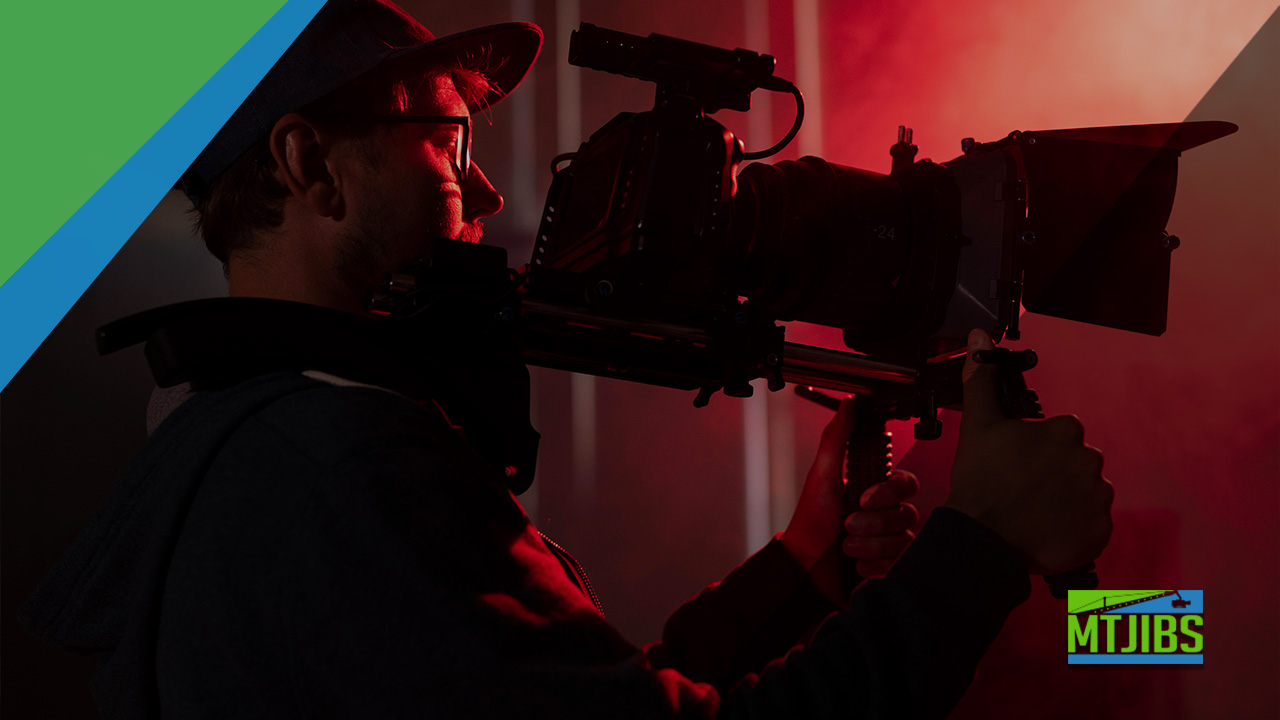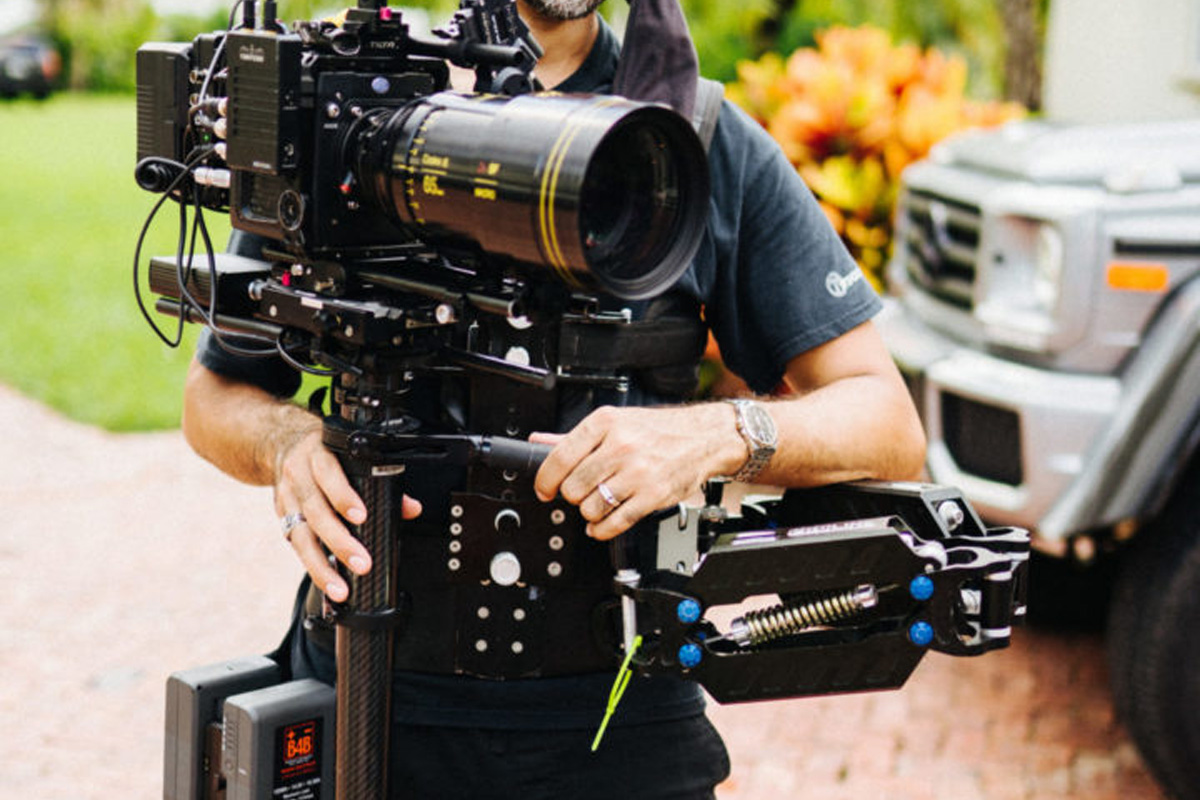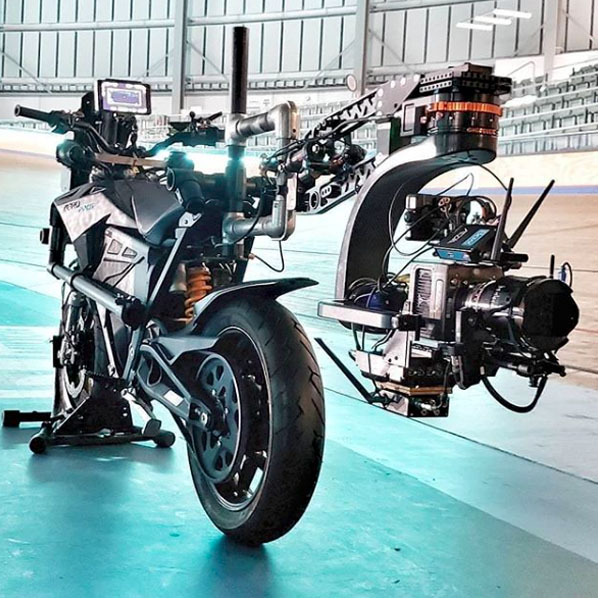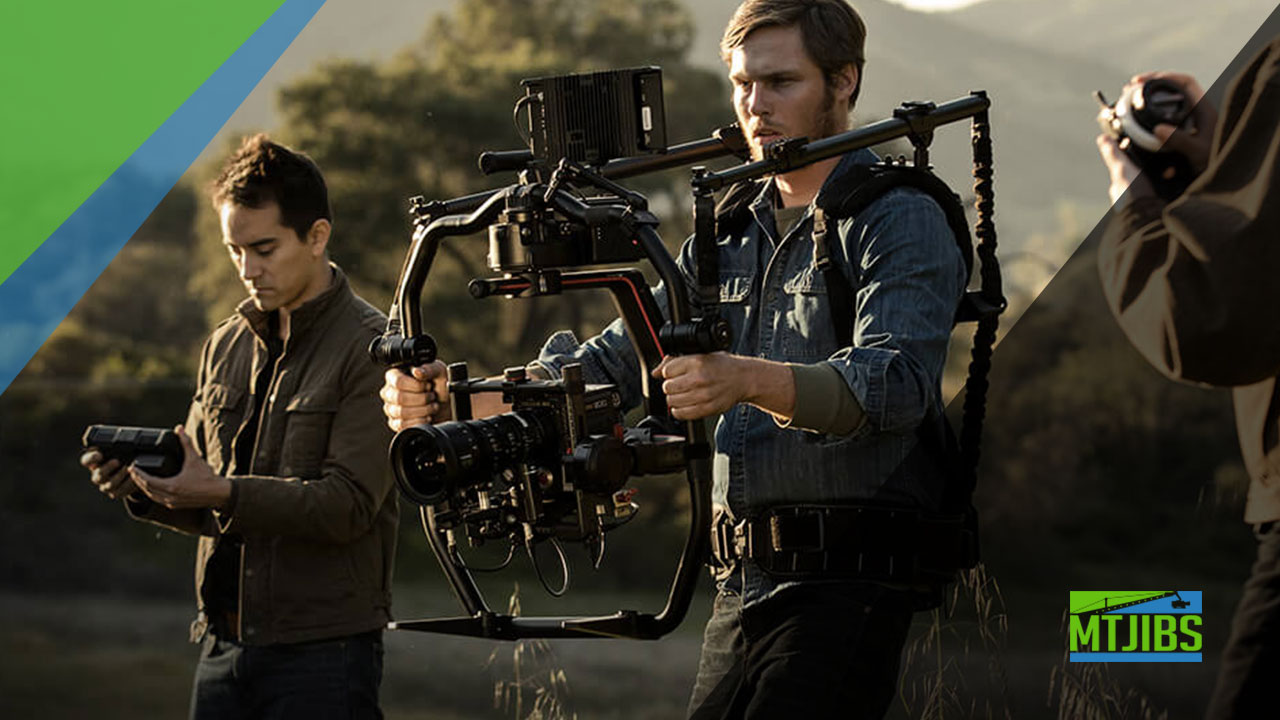
Steadicam vs Gimbal: Which One Should You Rent?
If you’re planning a corporate video production, live event coverage, or even a high-end promotional shoot, one of the first questions you’ll face is: How do we get smooth, cinematic camera movement?
The two most popular tools for stabilizing footage are the Steadicam and the gimbal. At first glance, they might seem like interchangeable options—you strap one on or mount a camera, and boom: smooth shots. But the reality is much more nuanced. The choice isn’t just about gear—it’s about storytelling, environment, and the operators you trust to bring your vision to life.
And here’s a spoiler: if you’re leaning toward a Steadicam rental, pairing it with an experienced Steadicam operator (like our pros at MTJIBS) is the smartest move you can make.
Key Takeaways
If you’re deciding between a Steadicam and a gimbal for your next production, the takeaway is this: it’s not just about the gear, it’s about the story you want to tell. Steadicams deliver a natural, human-like cinematic feel that’s perfect for corporate videos, live events, and branded storytelling. Gimbals, on the other hand, excel at robotic precision, fast-paced action, and heavy cinema rigs, making them ideal for dynamic product shots or vehicle-mounted footage. In many cases, the smartest productions use both: Steadicam for emotional, polished storytelling and gimbals for crisp, high-energy moments.
Table of Contents
What Are Steadicams and Gimbals, Really?
Before we get into the nitty-gritty, let’s clear up the basics.
What is a Steadicam?
A Steadicam is a body-worn camera stabilizer system that combines a harness (vest), an articulated arm, and a sled that holds your camera. Instead of relying on electronics, a Steadicam balances the camera mechanically, absorbing the operator’s body movements while allowing fluid, floating shots.
What makes Steadicam unique is the human element. Because it’s controlled by an operator’s touch and movement, Steadicam shots feel alive—organic, emotional, and subtly cinematic. That’s why Steadicam is still the go-to for Hollywood blockbusters, live broadcasts, and corporate videos that need to feel authentic yet polished.
What is a Gimbal?
A gimbal (like the DJI Ronin 2 or Shotover G1) is an electronic stabilization system. Using gyroscopes and motors, it automatically corrects unwanted movement across three axes: pan, tilt, and roll. Gimbals are fantastic for keeping shots buttery-smooth, even when running, riding in a car, or moving quickly across set.
While they deliver robotic precision, they don’t always capture the same natural, human touch you get with Steadicam. Still, they shine in fast-paced environments or when quick gear swaps are required.

Why Steadicam Still Reigns Supreme in Many Productions
If you ask most seasoned directors of photography, Steadicam operators, or video production managers, they’ll all agree: there’s nothing quite like a Steadicam. Even in an age where motorized gimbals dominate online gear lists, the Steadicam continues to be the gold standard for smooth, immersive, professional-quality footage.
When renting equipment for corporate videos, commercials, or live event coverage, choosing a Steadicam rental often delivers results that simply can’t be replicated by electronic stabilizers. Here’s why Steadicam remains the industry’s reigning champion—and why pairing it with a skilled Steadicam operator is one of the smartest investments you can make for your production.
1. Organic, Human-Like Motion
The biggest difference between Steadicam and gimbals is the “human touch.” A Steadicam isn’t just keeping a camera stable—it’s moving with intention.
There’s a subtle sway, a graceful rhythm, and a sense of floating that comes from the operator’s body mechanics. The viewer feels like they’re naturally gliding alongside the subject, rather than watching a mechanically perfect—but sometimes sterile—tracking shot.
For corporate storytelling, this natural quality is invaluable. Imagine filming a CEO walk-and-talk interview down a hallway. A Steadicam operator can keep the subject perfectly framed while subtly adjusting for pace and rhythm, creating footage that feels conversational, polished, and cinematic—all without the stiffness that gimbal footage sometimes produces.
2. Operator Skill Makes the Difference
When you rent a Steadicam, you’re not just renting a camera stabilizer—you’re investing in the artistry of the operator.
A professional Steadicam operator is more than a technician; they’re a storyteller. They use body posture, timing, and spatial awareness to direct how the audience experiences the scene. A skilled operator can:
- Anticipate a speaker’s movement and subtly adjust framing.
- Tilt naturally to emphasize gestures or facial expressions.
- Transition smoothly between groups of people during live events.
- Create seamless “hand-off” shots that flow into other camera movements.
This is the hidden value of Steadicam. While gimbals rely on motors, Steadicams rely on human intuition. And when you hire an operator through a trusted rental company like MTJIBS, you’re not just ensuring stable footage—you’re ensuring that every movement serves the story.
3. Long Takes Without Fatigue
Another often-overlooked advantage of Steadicam is its ergonomics. The vest-and-arm system redistributes the camera’s weight across the operator’s body, reducing strain and allowing for extended operation.
This means operators can film long takes—like event walkthroughs, corporate tours, or multi-minute continuous interviews—without fatigue setting in. Gimbal operators, by contrast, often end up with arm and back strain during long shots, especially with heavier cinema rigs.
For productions that require multiple takes or full-day coverage, a Steadicam operator can sustain performance throughout the shoot. That endurance translates to fewer interruptions, fewer reshoots, and smoother post-production.
4. Adaptability in Complex Environments
Corporate and event shoots rarely happen in a perfectly controlled studio. More often, you’re navigating office corridors, event stages, trade show floors, or even outdoor venues with uneven terrain.
This is where Steadicam shines. Unlike many gimbals that need smooth flooring or additional rigs like sliders and dollies, Steadicam thrives in challenging environments. Operators can handle:
- Narrow hallways where gimbals might hit walls.
- Stairs and ramps, keeping motion smooth without added equipment.
- Crowded rooms, weaving naturally between people.
- Outdoor uneven terrain, where electronic stabilizers may jitter or fail.
This adaptability is why Steadicam rental for corporate events has become a go-to choice. It ensures that no matter the environment, the footage maintains a polished, professional look.
5. A Cinematic Feel That Elevates Brand Perception
Most corporate clients may not know whether you used a Steadicam or a gimbal—but they feel the difference. Steadicam footage has a distinctive floating, cinematic quality that instantly raises the perceived production value of a video.
For companies, perception is everything. A brand video filmed with Steadicam feels high-end, polished, and cinematic—qualities that help position the company as premium, trustworthy, and modern. In other words, Steadicam isn’t just about camera stabilization—it’s about brand elevation.
Think of it this way: a gimbal can give you stability, but a Steadicam rental with an operator gives you stability and cinematic artistry. That’s why Steadicam remains the first choice for commercials, corporate branding videos, and live event coverage.
6. The “Uncommon” Advantages Nobody Talks About
Beyond the obvious benefits, here are a few insider points that often get overlooked:
- Natural Horizon Control: A Steadicam operator keeps the horizon level manually, avoiding the micro-corrections that gimbals sometimes overcompensate for.
- Zero Reliance on Batteries: Unlike gimbals that rely on electronic motors and battery swaps, a Steadicam is purely mechanical—no unexpected power failures mid-shot.
- Better for Live Broadcasts: Steadicam remains the tool of choice for live sports, concerts, and award shows because it offers reliability, endurance, and operator-driven responsiveness.
Immediate Adjustments: With Steadicam, the operator can make micro-adjustments instantly without waiting for motors to catch up. This keeps footage feeling fluid and responsive to real-world unpredictability.
When a Gimbal Might Be the Better Fit
Of course, gimbals have their strengths. They’ve come a long way in the last decade, and in some production environments, they’re the clear winner. Sometimes, a gimbal rental—especially when paired with an experienced gimbal operator—is exactly what your shoot needs.
Perfectly Smooth, Robotic Precision
If your production calls for ultra-stable footage at high speeds, gimbals deliver results that no human operator can replicate. Motorized 3-axis stabilization means the system can compensate for jerks, shakes, and bumps almost instantly.
That’s why gimbals are often the first choice for:
- Action-heavy shoots: sports, stunt sequences, or fast-moving live events.
- Dynamic product reveals: rotating around products with smooth, machine-perfect consistency.
- Vehicle-mounted shots: filming from cars, golf carts, or drones where vibrations would make a Steadicam shot impossible.
The footage from a gimbal often feels “locked in”—like the camera is floating on rails. For clients who want razor-sharp, precision-driven visuals, this robotic consistency is a major advantage.
Heavy Payloads for Modern Cinema Gear
One of the biggest leaps in gimbal technology has been payload capacity. High-end systems like the DJI Ronin 2 or Shotover G1 can support cinema cameras up to 30 lbs, including accessories like:
- Cinema lenses
- Matte boxes
- Follow focus systems
- External monitors
- Wireless video transmitters
This makes gimbals an excellent choice for productions using ARRI Alexa, RED, or Sony FX9 rigs where weight would push a Steadicam operator to their limits.
If your project involves heavy setups or high-end commercial cameras, a DJI Ronin 2 rental gives you stabilization without sacrificing camera build or lens options.
Quick Setup & Transitions
In fast-paced environments, time is money. One of the biggest benefits of modern gimbals is their ability to set up and rebalance quickly.
Unlike a Steadicam, which often requires careful fine-tuning of balance, a gimbal can be reset for a new camera body or lens in minutes. For productions that demand:
- Frequent location changes (shooting across multiple rooms or event spaces)
- Fast swaps between rigs (jumping from handheld to tripod to gimbal)
- Minimal downtime on set
…a gimbal can save valuable production minutes that add up to significant cost savings across a day.
This agility makes gimbals particularly attractive for event videography, multi-location corporate shoots, and commercials with tight schedules.
Remote Operation Capabilities
Another unique advantage of gimbals is their compatibility with remote control systems. Tools like the DJI Ronin 2 allow an operator to control pan, tilt, and roll remotely—meaning the camera can be mounted on a crane, dolly, car rig, or even a drone while still being actively “driven.”
For productions where shots need to move through spaces without a physical operator attached—like gliding over an audience at a corporate event or chasing a vehicle at high speed—this flexibility is invaluable.
When Gimbals Outshine Steadicam
While Steadicam has undeniable strengths, here are scenarios where gimbals often win:
- Action sequences that demand precision, like running shots or chase scenes.
- Commercial product videos requiring repeatable, machine-perfect movement.
- Car-mounted or aerial shots where human-operated rigs aren’t feasible.
- Heavier camera builds that would fatigue a Steadicam operator.
Shoots with frequent setup changes, where every minute of downtime impacts the budget.

Steadicam vs Gimbal: Real-World Comparisons
Let’s break down a few scenarios you might face when planning a video shoot:
| Scenario | Steadicam Advantage | Gimbal Advantage |
| Corporate “walk and talk” interview | Natural, human-like pacing and movement | Might feel too robotic |
| Live events (award shows, sports, conferences) | Long takes, operator-driven storytelling | Ultra-stable for fast action moments |
| Tight hallways, uneven ground, staircases | Operator instinct keeps footage smooth | Struggles without flat surfaces |
| High-end cinema rigs with heavy accessories | Physically demanding but possible | Handles 30+ lb payloads with ease |
| Quick gear swaps or fast schedule | Requires fine-tuned balance | Modular design saves time |
The Hybrid Approach
Sometimes, the smartest move isn’t choosing one over the other—it’s combining both. Many productions use Steadicam for storytelling-driven sequences (walkthroughs, interviews, emotional branding shots) and gimbals for high-energy action or fast transitions.
The good news? With MTJIBS, you don’t have to pick. Our team offers both Steadicam systems (like the Phantom-V and Proline Raven) and high-end gimbals (like the DJI Ronin 2 and Shotover G1). Even better, we provide experienced operators who know when to use which tool for maximum impact.
Insider Tips for Renting Steadicam or Gimbal Systems
If you’re ready to book equipment, here are a few production manager secrets that will save you time, money, and headaches:
1. Always Budget for the Operator
Renting a Steadicam without a trained operator is like renting a race car without a driver. You won’t get the results you want. A Steadicam operator brings not just technical expertise, but creative instincts that transform your video.
2. Plan for Blocking and Rehearsals
Even though Steadicam feels natural, it still benefits from rehearsal. Walking the route with your talent and operator ensures smoother execution and fewer retakes.
3. Match the Tool to the Story
Don’t just think about smoothness. Think about what story you’re trying to tell. If you want warmth, intimacy, or a cinematic feel, lean Steadicam. If you want crisp precision and mechanical perfection, lean gimbal.
4. Partner With a Team That Does Both
The best rental isn’t just equipment—it’s a production partner. With MTJIBS, you get access to both Steadicam and gimbal systems, plus a crew who knows how to maximize their potential for your unique project.
So… Which One Should You Rent?
If your corporate video or live production needs warmth, emotion, and an elevated cinematic feel, Steadicam is the way to go. Its operator-driven artistry creates footage that feels alive, not robotic.
If you need razor-sharp stability for high-energy shots or heavy rigs, a gimbal rental might fit the bill.
But in most professional productions, especially in the corporate video world, Steadicam is the tool that elevates brand storytelling—and the difference comes down to having the right operator by your side.
Ready to Rent a Steadicam or Gimbal? Contact MTJIBS
At MTJIBS, we don’t just rent out gear—we deliver a complete production solution. Every Steadicam or gimbal system comes with highly trained operators who know how to bring out the best in the equipment. A Steadicam is only as good as the operator behind it, and our team is made up of seasoned professionals who’ve worked on everything from corporate video productions to live events and national broadcasts.
When you choose MTJIBS, you’re not just getting a camera stabilizer—you’re getting years of expertise in blocking, movement design, and technical troubleshooting that ensures your footage looks flawless. Our operators know how to adapt on the fly, whether that means navigating a crowded trade show floor, capturing a smooth walk-and-talk interview, or pulling off a cinematic reveal shot that instantly elevates brand perception.
Don’t leave your footage to chance. Contact MTJIBS today to lock in your Steadicam rental with operator, secure a gimbal system for those dynamic shots, or let us design a tailored movement package for your production.
Steadicam vs Gimbal FAQs
It depends on your production goals. A Steadicam offers a natural, floating feel that mimics human movement — ideal for corporate videos, interviews, or cinematic shots that need personality. A gimbal provides robotic precision and is better for fast, dynamic action scenes.
Steadicam rental rates vary depending on the equipment package and whether you also hire a professional operator. At MTJIBS, we specialize in Steadicam rentals with operators, ensuring you don’t just get the gear but also the expertise needed for flawless execution.
Yes — unlike a gimbal, a Steadicam requires a trained operator. It’s a specialized skill that takes years of practice to master. Renting just the rig without an operator is rarely effective, which is why MTJIBS always provides experienced Steadicam operators with our rentals.
Not exactly. While a gimbal is excellent for smooth robotic movement, it can’t replicate the organic, human feel of a Steadicam shot. In fact, many productions use both tools together — a Steadicam for storytelling shots and a gimbal for action or product-driven sequences.
For most corporate video productions, a Steadicam is the better fit. It adds a professional, cinematic touch to interviews, walkthroughs, and branded content. Gimbals are more common in commercials or music videos where quick, flashy movement is key.
When you rent from MTJIBS, you’re not just getting a Steadicam rig. We provide:
- A professional Steadicam operator
- A fully maintained and balanced Steadicam system
- On-set expertise for smooth, cinematic results
MTJIBS
Contact us today for a quote on the best professional camera movement & crew rental for your next video production project.







